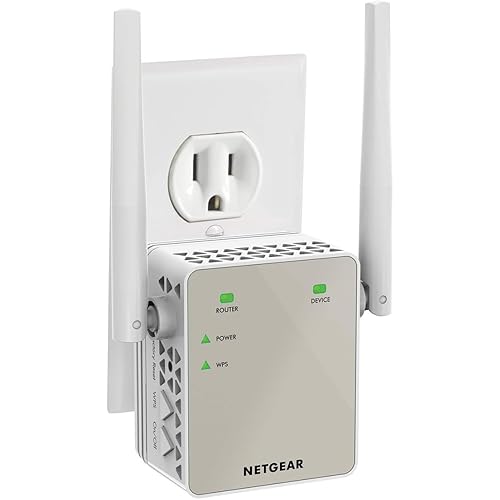TP-Link Tri-Band WiFi 7 BE22000 Whole Home Mesh System (Deco BE85) | 12-Stream 22 Gbps | 2× 10G + 2× 2.5G Ports Wired Backhaul, 8× High-Gain Antennas | VPN, AI-Roaming, 4×4 MU-MIMO, HomeShield(2-Pack)








Buy Now, Pay Later
- – Up to 36-month term if approved
- – No impact on credit
- – Instant approval decision
- – Secure and straightforward checkout
Ready to go? Add this product to your cart and select a plan during checkout.
Payment plans are offered through our trusted finance partners Klarna, Affirm, Afterpay, Apple Pay, and PayTomorrow. No-credit-needed leasing options through Acima may also be available at checkout.
Learn more about financing & leasing here.
Selected Option
Returnable until Jan 31, 2025
To qualify for a full refund, items must be returned in their original, unused condition. If an item is returned in a used, damaged, or materially different state, you may be granted a partial refund.
To initiate a return, please visit our Returns Center.
View our full returns policy here.
Style: WiFi 7 BE22000, 2-Pack
Features
- Ultimate BE22000 Tri-Band Wi-Fi 7 SpeedsDeco BE85 is designed with the latest Wi-Fi 7 technology, featuring Multi-Link Operation, Multi-RUs, 4K-QAM, and 320 MHz channels. With speeds of 11520 Mbps on the 6GHz band, 8640 Mbps on the 5GHz band, and 1376 Mbps on the 2.4GHz band, the 2 pack mesh connects over 200 devices without dragging down performance and delivers unparalleled Wi-Fi performance.
- Pro-Grade Dual 10G WAN/LAN PortsEquipped with two 10G WAN/LAN portsone RJ45 port and one SFP+ Fiber/RJ45 Ethernet combo portDeco BE85 provides flexible support for both fiber and copper connections. The additional two 2.5G ports and a USB 3.0 port make it an ideal solution for future-proofing your home network.
- Simultaneous Wireless + Wired BackhaulThrough TP-Link's self-developed technology, Deco BE85 can connect to wireless and wired backhaul simultaneously, taking full advantage of the WiFi 7 technology and giving you a faster speeds and wider coverage.
- AI-Driven Seamless RoamingThe Deco Mesh forms a unified network with a single network name. With built-in AI-Roaming technology, it creates the ideal WiFi solution with its advanced algorithms and self-learning. Walk through your home and enjoy seamless streaming at the fastest possible speeds.
- TP-Link HomeShieldTP-Link's premium security service keeps your home network safe with cutting-edge network and IoT protection. Free features: 1. Basic Network Security including Security Scan and IoT Device Identification 2. Basic Parental Controls 3. Quality of Service 4. Basic Weekly/Monthly Reports. Visit TP-Link website for more information.
- VPN Clients and Server SupportedAllow devices in your home network to access remote VPN servers without needing to install VPN software on every device. Deco BE85 can run both the VPN and ordinary internet connections at the same time, delivering security and flexibility.
- Easy Set Up and Management Set up and manage your mesh router in minutes with the free Deco App available for both Android and iOS devices.
- Extensive CompatibilityTP-Link Deco products are extensively compatible and can work together to form a Mesh Wi-Fi network. It is also backward compatible with all WiFi generations and works with any internet service provider (a modem is required for most internet service providers).
Description
Get ready for lightning-fast WiFi with Deco BE85 mesh system, utilizing the latest WiFi 7 technology for unprecedented speed and efficiency. Tri-band channel with WiFi 7 exclusive features, 8 high-performance antennas, and 2 internal cooling fans ensure reliable connections and maximum performance. Connect to wireless and wired backhaul simultaneously, while enjoying flexible support for both fiber and copper connections on 10 Gbps speeds. Expandability options include 2 x 2.5 Gbps ports and 1 x USB A 3.0 port. Get the Deco BE85 for unmatched WiFi performance.
Brand: TP-Link
Model Name: Deco BE85(2-pack)
Special Feature: QoS, Access Point Mode
Frequency Band Class: Tri-Band
Wireless Communication Standard: 802.11n, 802.11ax, 802.11ac, 802.11g, 802.11.be
Compatible Devices: Tablet, Smartphone
Frequency: 6 Hz
Recommended Uses For Product: Home
Included Components: 1 RJ45 Ethernet cable, Quick Installation Guide, 2 Power adapters, 2x Deco BE85 units
Connectivity Technology: Wi-Fi, USB, Ethernet
Color: White
Connectivity Technology: Wi-Fi, USB, Ethernet
Control Method: App
Data Transfer Rate: 22000 Megabits Per Second
AntennaType: Internal
Frequency: 6 Hz
Wireless Compability: 802.11n, 802.11ax, 802.11ac, 802.11g, 802.11.be
Controller Type: App Control
Antenna Location: Home
Compatible Devices: Tablet, Smartphone
Number of Antennas: 8
LAN Port Bandwidth: 10 Gbps
Security Protocol: WPA2, WPA3, WPA
Is Electric: Yes
Operating System: RouterOS
Frequency Band Class: Tri-Band
Number of Ports: 4
Additional Features: QoS, Access Point Mode
Global Trade Identification Number: 29
Model Name: Deco BE85(2-pack)
Built-In Media: 1 RJ45 Ethernet cable, Quick Installation Guide, 2 Power adapters, 2x Deco BE85 units
UPC: 840030706929
Model Number: Deco BE85(2-pack)
Brand: TP-Link
Manufacturer: TP-Link
Item Weight: 6.53 Pounds
Item Dimensions L x W x H: 5.04"L x 5.04"W x 9.29"H
Frequently asked questions
To initiate a return, please visit our Returns Center.
View our full returns policy here.
- Klarna Financing
- Affirm Pay in 4
- Affirm Financing
- Afterpay Financing
- PayTomorrow Financing
- Financing through Apple Pay
Learn more about financing & leasing here.
Similar Products
Top Amazon Reviews





























